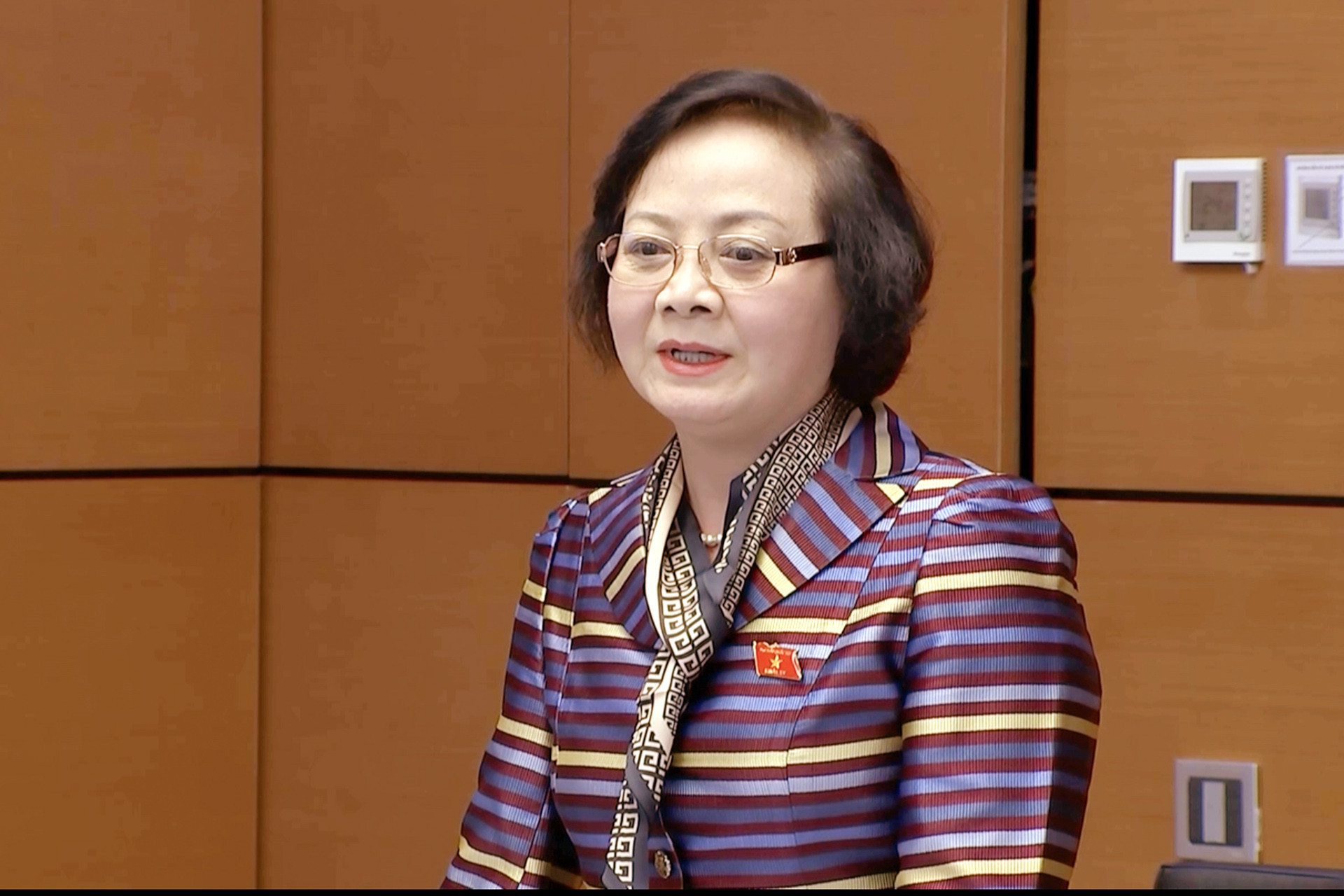On the morning of October 31, the National Assembly discussed the draft resolution on organizing urban governance for Hai Phong City and the proposal to designate Hue as a centrally governed city.
Minister Pham Thi Thanh Tra noted that the Politburo has issued multiple directives aimed at transforming Thua Thien Hue Province into a centrally governed city soon. Both the National Assembly and the government have passed various resolutions supporting this initiative.
“This consideration for Hue’s designation as a centrally governed city is a historic decision, adding a uniquely characteristic city to Vietnam’s diverse system of centrally governed urban areas,” Minister Tra stated.

The Minister also mentioned that efforts are being made to develop Vietnam’s urban areas, including cities under central administration, as well as district-level and provincial-level cities.
Minister Tra affirmed that the proposal for Hue to become a centrally governed city has matured, meeting all required criteria. Hue’s unique standing as a heritage city allows for specific criteria concerning average monthly income and the number of urban administrative units. Thua Thien Hue has already met two of these criteria, and “within 1-2 years, Hue is expected to meet all five criteria for becoming a centrally governed city.”
However, the Minister also highlighted significant challenges Hue would face as a centrally governed city.
The party committee, government, and people of Thua Thien Hue have long aspired to see this change, a goal they have pursued diligently for the past 15 years.
Despite this progress, Thua Thien Hue still faces socio-economic challenges, with a large portion of its administrative divisions remaining rural. Minister Tra noted that transitioning from a rural, agricultural mindset to that of an urban area “is not a quick process.” Therefore, solutions are needed to accelerate socio-economic development.
Minister Tra mentioned that an evaluation will be conducted, and soon, the National Assembly will be advised to issue specific mechanisms and policies to support Hue’s development as a centrally governed city, ensuring it is “well-rounded and equipped to integrate.” This is an issue of national importance, not just for Hue alone.
Regarding the name “Centrally Governed Hue City,” the Minister shared that the public is highly supportive, as the name “Hue City” has long been embedded in people's minds, synonymous with Thua Thien Hue Province.
Concerning the organization of urban governance for Hai Phong, Minister Tra noted that Vietnam currently has three urban governance models: Hanoi, with its unique capital structure, and Ho Chi Minh City and Da Nang.
Hai Phong’s urban governance organization largely follows the models of Ho Chi Minh City and Da Nang, though with some distinctions.
Similarities include delegating the functions and responsibilities of the city’s specialized departments to other agencies, establishing public service units under the city government, and stipulating the authority of the Chairman of the city People’s Committee to delegate authority to heads of other administrative agencies. The difference lies in the responsibilities outlined for the Hai Phong City People’s Council.
“We should pursue comprehensive decentralization. The stance of the Central Party Committee, the National Assembly, and directives from the Prime Minister and the government is focused on decentralization and delegation of powers,” Minister Tra emphasized.
As for Thuy Nguyen City, the Minister noted that it is set to become the new administrative, economic, and social center of Hai Phong, and will likely serve as a future logistics, service, and technology hub, replacing the current administrative center.
Thuy Nguyen City will follow the model of Thu Duc City under Ho Chi Minh City. Regarding the number of administrative titles, the Minister indicated that adjustments will be considered to ensure alignment, as a significant effort to restructure administrative units at district and commune levels is expected.
Tran Thuong